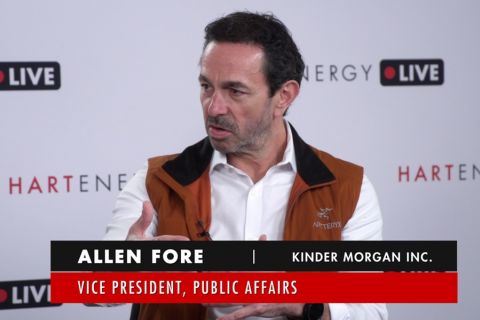
FIGURE 1. Several E&P companies contributed to the study. (Images courtesy of Enaxis)
Traditionally, E&P IT has focused on reliability and customer service while taking guidance on innovation and new capabilities from the business. While this model has succeeded in the past, increasing complexity in the industry has resulted in new IT challenges. Acquisition, mergers, and joint ventures (JVs) have driven growth in the E&P industry. Each new asset team comes with unique processes and workflows throughout the value chain – from prospect to production. With the objective of quickly reacting to business needs, many E&P companies now find themselves managing multiple, fragmented point solutions.
Enaxis Consulting research shows that IT priorities are shifting in the E&P industry and that leaders are responding with new organizational models, differentiated services, and innovative technologies. What types of transformation are taking place in E&P IT and how are CIO organizations embracing the changes?
Approach
In late 2012 Enaxis Consulting engaged IT leaders within a select group of E&P peers. The goal was to identify commonalities, differences, and trends driving the direction of IT for upstream oil and gas. Initially, Enaxis collected quantitative and qualitative IT profiles to establish an operating baseline for the participating companies. Enaxis then analyzed the data to focus on key themes and topics for deeper investigation. Seven E&P IT groups were engaged in a dialogue to understand how these organizations manage business needs and create value.

FIGURE 2. IT support of asset teams and business units makes up the majority of total operating spend.
Profile of E&P contributors
To be considered for participation, a company had to operate as an independent E&P with globally distributed assets and produce at least 100 MMboe annually, as shown in Figure 1.
Key themes
Findings suggest several overriding themes are guiding E&P IT management decision-making:
- Increasingly complex production environments are driving the need to improve access to real-time data and analytics across the value chain;
- The definition of customer satisfaction has evolved from high touch and reliability to improved data management, flexibility, scalability, and alignment with strategic goals around productivity, compliance, and risk;
- IT innovation in the E&P environment is not about bleeding-edge technology. It is about adapting proven solutions to support the unique business process requirements of the asset teams; and
- E&P CIOs are transforming their operating models to keep pace with the changing needs of the industry by offering higher customer focus, greater flexibility, and faster turnaround.
Data vs. information
The E&P industry has undergone a dramatic transformation in the past decade both in terms of the complexity of value chain processes and the scope of operations. Over this same period, leaders in the E&P space have aggressively pursued new assets through acquisition and JVs. Each separate asset group relies on unique IT-enabled capabilities to increase proven reserves and production.
The result is that E&P IT groups have been tasked with supporting a radically altered business model addressing distinct needs at the asset team and business unit level as well as providing the means to collectively manage finances, risk, and compliance at the enterprise level.
Customer satisfaction vs. customer centricity

FIGURE 3. This figure shows some of the common innovation focus areas identified within the participating organizations.
It should not come as a surprise that the new demands on E&P IT are closely linked to changing customer expectations. E&P leaders cite managing customer satisfaction and expectations as one of their primary objectives. Companies cite a primary emphasis on responding to customer needs – a more reactive approach – even if meeting those needs does not necessarily align with other IT operational objectives such as standardization, cost efficiency, and low complexity.
Although IT business objectives may be shifting from operational excellence to business value adds, E&P IT spending patterns suggest that a gap persists in business needs vs. IT expenditures. Current spending trends among the sample of E&P companies show that less than two-thirds of IT spend was focused on business-facing operations such as land management, drilling, and geology and geophysics, while more than 40% of spend was dedicated to more centralized functions such as supply chain, corporate administration, and finance and accounting (Figure 2).
Change vs. innovation
All companies acknowledged the importance of innovation and new ways to improve efficiency (Figure 3). However, not all of the surveyed companies have a dedicated innovation function. Many of the companies seemed to espouse the philosophy that while innovation may be part of the corporate culture, introduction of new technologies is not mission-critical for the IT team. Instead, these companies view IT innovation as business enablement through existing technologies and platforms.
It is notable that responses for innovation reflect limited transformation of business operations. Instead, the majority of responses suggest updates to the IT function. Those change programs that do represent new business capabilities, such as enterprise content management and mobility, may certainly enable the business but do not suggest true breakthrough innovations in how E&Ps go to market.

FIGURE 4. The primary organizational model involves a business liaison role.
The reality is that most independent E&P companies simply do not have the scale to manage IT across a federated model. Therefore, E&P IT organizations have adopted their operating models to support a variety of business-facing capabilities and roles to link IT delivery to business functions. Research identified two general models to manage the IT/business relationship.
The primary model (Figure 4) involves a designated business liaison or business champion role. Typically, this role resides in the business but has joint accountability to the CIO. It might be an IT-savvy senior manager or director-level executive who has good exposure to multiple areas of IT and the business. All IT needs for a given business unit are coordinated through this role.
The alternate model involves functional liaisons or lead business analysts (Figure 5). Typically, this role resides within IT and might be a business-savvy manager or senior manager who maintains multiple relationships in the business. This role coordinates all business unit needs for a given function.
Regardless of which model works best within a given company, there is significant momentum around the concept that E&P IT must establish structured processes with designated accountabilities to ensure alignment with the business. Both models separate functional ownership of delivery from liaison/business relationship owners.
New challenges
The increasing pace of change in the E&P industry has introduced a number of new challenges for IT. With these challenges come some unique opportunities. Ongoing consolidation, new sources, and innovative drilling methods will only increase the potential of IT.

FIGURE 5. An alternative organizational model uses a functional liaison role.
At issue is whether the business continues to view IT as a necessary utility or embraces the value of a true partnership. Even the most visionary technologists will lose this debate without the right business interaction model. Considering the cultural values ingrained in the top E&P competitors, it’s unlikely that the business will make the first move toward seeking the counsel of IT.
By contrast, winners in this space will develop the processes and tools to actively engage business leadership in a constructive dialogue with meaningful alternatives and attractive outcomes aligned with business needs.
Recommended Reading
The Jones Act: An Old Law on a Voyage to Nowhere
2024-04-12 - Keeping up with the Jones Act is a burden for the energy industry, but efforts to repeal the 104-year-old law may be dead in the water.
Kinder Morgan Exec: Building Pipelines ‘Challenging, but Manageable’
2024-04-05 - Allen Fore, vice president of public affairs for Kinder Morgan, said building anything, from a new road to an ice cream shop, can be tough but dealing with stakeholders up front can move projects along.
FERC Again Approves TC Energy Pipeline Expansion in Northwest US
2024-04-19 - The Federal Energy Regulatory Commission shot down opposition by environmental groups and states to stay TC Energy’s $75 million project.
CEO: Linde Not Affected by Latest US Green Subsidies Package Updates
2024-02-07 - Linde CEO Sanjiv Lamba on Feb. 6 said recent updates to U.S. Inflation Reduction Act subsidies for clean energy projects will not affect the company's current projects in the United States.
Global Energy Watch: Corpus Christi Earns Designation as America's Top Energy Port
2024-02-06 - The Port of Corpus Christi began operations in 1926. Strategically located near major Texas oil and gas production, the port is now the U.S.’ largest energy export gateway, with the Permian Basin in particular a key beneficiary.




